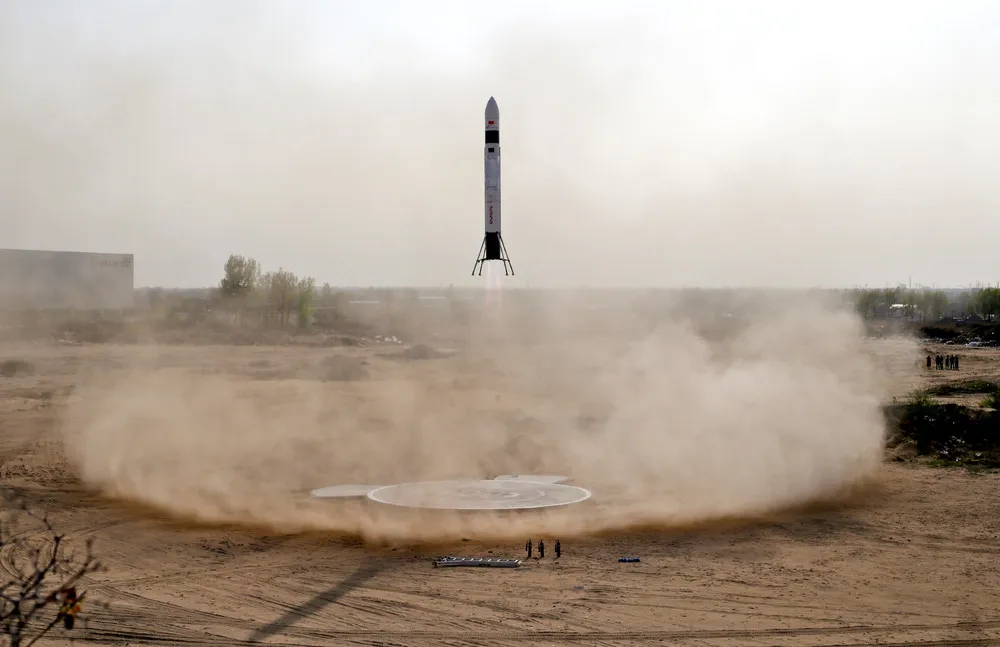|
LinkSpace's reusable rocket RLV-T5, also known as NewLine Baby, returns to the landing site during a test launch on a vacant plot of land near the company's development site in Longkou, Shandong province, China, April 19, 2019. During initial tests of their 8.1-metre tall reusable rocket, Chinese engineers from LinkSpace, a start-up led by China's youngest space entrepreneur, used a Kevlar tether to ensure its safe return. Just in case. But when the Beijing-based company's prototype, called NewLine Baby, successfully took off and landed last week for the second time in two months, no tether was needed. The 1.5-tonne rocket hovered 40 metres above the ground before descending back to its concrete launch pad after 30 seconds, to the relief of 26-year-old chief executive Hu Zhenyu and his engineers - one of whom cartwheeled his way to the launch pad in delight. LinkSpace, one of China's 15-plus private rocket manufacturers, sees these short hops as the first steps towards a new business model: sending tiny, inexpensive satellites into orbit at affordable prices. Demand for these so-called nanosatellites – which weigh less than 10 kilogrammes and are in some cases as small as a shoebox – is expected to explode in the next few years. And China's rocket entrepreneurs reckon there is no better place to develop inexpensive launch vehicles than their home country. (Photo by Jason Lee/Reuters)
|

